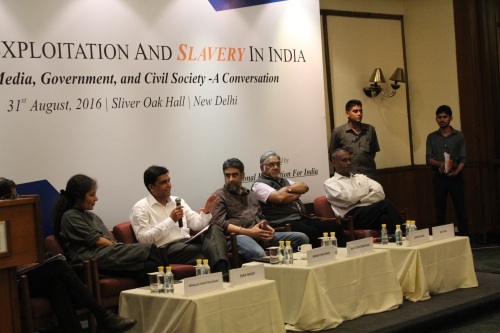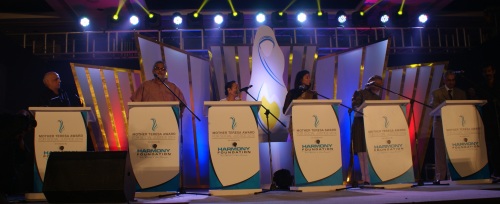
On August 31, 2016, National Foundation for India hosted a panel discussion on ‘Labour Exploitation and Slavery in India: The Role of Media, Government, and Civil Society.’ Kishalay Bhattacharjee, former resident editor NDTV and executive director of Reachout Foundation, moderated the event. The hall in India Habitat Centre was filled with around 160 state level journalists, national media, journalism students, and CSOs, who came to hear senior journalists and other key stakeholders discuss the issue. Here is an overview of their compelling and timely conversation.
Media perspective of bonded labour:
“Cruelties, deaths, sexual exploitation – everything that is immediately newsworthy will get priority… If I want to report on bonded labour, [the media and reading public] will be far less interested.” – Hartosh Singh Bal, Political Editor for Caravan Magazine
“There is no space for labour in the media at all. Labour is no more an issue as far as media is concerned.” – Girish Nikam, Rajya Sabha TV
On the storytelling standard:
“Good intentions are never enough. Stories must make readers read. They have to be written in a way that will make people read.” – Hartosh Singh Bal
On using the term ‘slavery’:
“Use the harshest word available…when we think others don’t deserve dignity or wages, we are the ones who are sick.” – Saba Naqvi, Political Editor for Outlook Magazine
“‘Trafficking’ and ‘bonded labour’ do not evoke responses.” – Hartosh Singh Bal
MP Udit Raj urged the audience to consider the economic and social reasons for debt bondage and not apply the global definition of ‘slavery.’ In response, Sanjay Macwan, Regional Director at IJM, said: “Let’s not look at the global definition. We have our own. Let’s look at that.” He was of course referring to Section 370 of the Indian Penal Code, which states:
“Buying or disposing of any person as a slave. – Whoever imports, exports, removes, buys, sells of disposes of any person as a slave, or accepts, receives or detains against his will any person as a slave, shall be punished with imprisonment of either description for a term which may extend to seven years, and shall also be liable to fine.”

International Justice Mission also organised a Multi-Sensory Exhibition to “bring the field to the audience,” which was available for the audience to explore before the panel discussion. Using photographs, audio recordings, and objects that were either recovered from rescue sites or representative in nature, the exhibition invited people to look more deeply into the lives of bonded labour survivors.
























